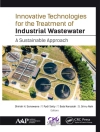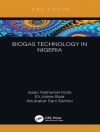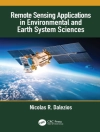Medical Geology
The key to understanding the relationship between the geological environment and human health
Medical geology deals with of the impact of environmental factors on the health of individual human beings and communities. In particular, it studies environmental exposure to both macro- and micronutrients in the geosphere, hydrosphere, and atmosphere–respectively, soil, water, and airborne dust–which may positively or negatively impact human growth, development, and overall health. The insights contributed by this burgeoning field can aid not only in individual medical cases, but also in assessing disproportionately impacted communities and addressing global medical inequality.
Medical Geology: En route to One Health is among the first books to address this vital subject by summarizing recent research in this field. It also serves as an introduction to the multidisciplinary One Health methodology, which unites medical, geological, and environmental insights in one continuous approach to public health.
Medical Geology readers will also find:
* An explanation of the influence of the environment on nutrient availability
* Case studies of well-documented links between endemic diseases and environmental conditions
* A systematic analysis of the causes of essential element deficiencies in different world regions
Medical Geology is an essential overview of the field, for advanced students as well as medical, environmental, or geological researchers who wish to understand the complex relationship between the geological environment and human health.
表中的内容
Section 1 – Geochemistry and Health
1. Medical geology: Geosphere, human and animal interface
2. Biogeochemistry: Essential link between geosphere and biosphere
3. Geochemical release and environmental interfaces
Section 2 – Dust Storms and Health
4. Minerogenic dust: Trace elements
5. Silicosis and asbestosis
6. Radon and health
Section 3 – Medical Geology of the Hydrosphere
7. Water-rock interactions: Mineral dissolution
8. Water hardness and health
9. Geochemistry of fluoride in the environment and human health
10. Iodine deficiency disorders (IDD) and strategies for alleviation
11. Understanding nexus between hydrogeochemical cycling and medical geology of arsenic
12. Potentially toxic metals and health
Section 4 – Medical Pedology: Health Effects from Soils and Sediments
13. Dynamics of trace element bioavailability in soil: Agronomic enhancement and risk assessment
14. Geochemical provenance of metalloids and their release: Implications on medical geology
15. Cobalt and copper deficiency and molybdenosis
16. Healing clays structure and functions
Section 5 – Case Studies
17. Chronic kidney disease of unknown etiology (CKDu) ? the search for causes and the impact of its politicization
18. Uraniferous province of Lagoa Real: routes, dispersion and impacts of radioelements on health
19. Defluoridation
20. Pharmacology, toxicology and therapeutic effect of metals and minerals used in traditional medicine
21. Understanding the aetiology of trace elements related non-communicable diseases ? reviewing the Ghanaian situation
22. Dental fluorosis in Turkey
23. Environmental and medical geology of the lead mining and metallurgical complex of Bahia: The case of lead metallurgy, Santo Amaro, Bahia, Brazil
24. Uncontrolled coal fires: How medical geology can save lives
关于作者
Majeti Narasimha Vara Prasad, Ph D, is Emeritus Professor at the School of Life Sciences, University of Hyderabad, India.
Meththika Vithanage, Ph D, is Professor and founding director of the Ecosphere Resilience Centre, University of Sri Jayewardenepura, Sri Lanka.












